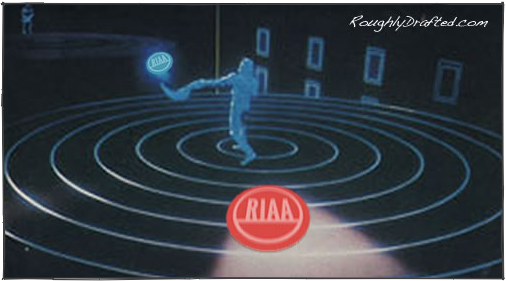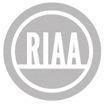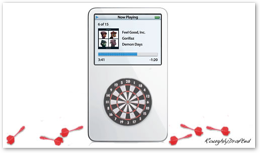
The Danger of DRM
The market for digital music was repressed for nearly a decade prior to the arrival of Apple's iPod. Here's why digital music languished for so long, how Apple was able to build a digital business, and why rivals are struggling to turn back the clock and return digital downloads into a legal black hole of onerous restrictions.
The Music World Before DRM
Throughout the 1980's, the word for portable music was Walkman. Sony introduced its compact cassette tape player in 1979, and maintained the popularity of its trademark for nearly twenty years. Sony's Walkman was simple, small, and easy for users to figure out. There was no copy protection.
The cassette tapes used in the Walkman and similar players were actually originally introduced by Phillips in the early 60's. Both blank and prerecorded cassette tapes were easy to find, relatively cheap, and worked in a variety of players, including non-Sony personal players, larger portable boom boxes, and home console stereo systems. It was easy to create mix tapes from records, radio, or live recordings.
By the late 80's, the limitations of cassette tape began to show. Sony and Phillips had introduced the optical digital Compact Disc back in 1982, but it gained little adoption until the late 80s because of the high initial price for both players and media.
Further, there was no way for users to record their own content on CDs, and there wouldn't be for nearly a decade. The physical shape of CDs also complicated the design and size of a portable player. So while the CD was in many ways an improvement over vinyl records, it was not the ideal replacement for cassette tapes.
Phillips attempted to introduce a new consumer digital cassette format, and Sony and Phillips also worked together to create the higher-end Digital Audio Tape format, but both suffered from the flaws inherent with tape: physical wear and stretching, magnetic erasure, dust contamination, the complexity of mechanical tape transports, and tape spooling that made fast forwarding to find a song a very slow process.
In order to deliver the benefits of both cassette tape and CD, Sony introduced its own new format in 1991: MiniDisc. The new format offered a portable, compact form factor and could record like cassette tapes, but also offered the optical digital sound, media durability, and instant access of CDs.
Digital's Death by Restriction
Unfortunately, the music industry was so worried that the MD, DAT, and other digital formats would be used to illegally duplicate music that it introduced severe use restrictions and complexity for digital players that ended up killing their adoption, particularly in the US market.
The RIAA had Congress pass the Audio Home Recording Act in 1992, which demanded royalties on all digital recording equipment and blank media, and required Serial Copy Management System restrictions be included on all new consumer audio recorders, to prevent music from being digitally duplicated beyond one generation.
The legislation was supposed to ensure that consumers would have access to new digital recording technology for private noncommercial use without the threat of being sued by copyright owners, but the actual result was to drive up the price of digital recorders, while making them nearly useless to consumers due to the excessive built-in hardware restrictions.
The CD-R Revolution
The machinations of the RIAA and Congress were eventually skirted by the arrival of new technology. The audio CD had been adopted for computing use as CD-ROM, a high density storage system at a time when the 650 MB capacity of CDs was many times larger than any available hard drive.
CDs were not originally designed to support recording, but the obvious applications for re-writable CD-ROM resulted in the development of technology to burn special blank CD media in a way that created discs that could be read by existing CD players. Since CD-ROM was simply an audio CD with additional directory information, it was suddenly possible for consumers to create their own audio CDs.
The actual digital audio data of a CD was too big for users to manipulate; until the mid 90s, copying an entire raw audio CD into a computer was simply impossible. Users needed a way to compress the raw AIFF CD audio down to a manageable size, but this took a lot of processing power.
By the mid 90's, home computers were just gaining the CPU capacity required to quickly rip CD audio into a compressed MP3 audio file. The MP3 format rendered the music on a CD into files a fraction of their original size, and unleashed new applications for audio use on computers.
The digital equivalent to the mix tapes of the 80s had been repressed by law and economics for so long that this new ability to rip music exploded onto the scene without any market to accommodate users, who wanted to use MP3 files in the same way they'd used tapes a generation prior.
Instead of offering reasonably priced digital music, the music industry tried to lock everything down, either to hardware media or to proprietary formats with excessive use restrictions. That left music trading sites the most practical way to obtain digital music.
The iPod Arrives
Digital files not only sounded better than cassette tapes, but could also provide other features. For example, digital systems could index and display the name and artist of a song as it played. Managing this meta data made creating the digital equivalent of a mix tape a more complex task.
When Apple introduced the iPod in October of 2001, it was, like most competing digital music players, a simple device that played plain MP3 files. Apple differentiated the iPod by leveraging its QuickTime technology to transfer much of the complexity in managing songs, meta data, and playlists to the integrated iTunes software running on a computer.
This not only made the iPod simpler, but allowed Apple to swallow the market by offering consumers something rivals weren't: a digital experience with the simplicity of an 80's mix tape.
While Apple worked to make its iTunes and iPod combination easier to use, rivals seemed hell bent on making things more complex: Sony with ATRAC, and Microsoft with Janus.
Killed by Complication
Sony, having acquired Columbia Records in 1988, was now aligned behind music industry interests. It had long sought to replace the open MP3 format with its own ATRAC audio compression scheme in order to retain control over digital music files and limit the potential for music file sharing.
However, its customers were turned off by having to re-encode all their music, and the software Sony provided was obtuse, clumsy, and problematic, in stark contrast to its often stylish and elegant hardware.
While Sony worked to establish ATRAC, Microsoft determined to take over control of digital music and media with its Windows Media by giving its existing DRM system godlike powers and the name of a deity: Janus.
Next Articles:
This Series










Monday, November 13, 2006




 Bookmark on Del.icio.us
Bookmark on Del.icio.us Discuss on Reddit
Discuss on Reddit Critically review on NewsTrust
Critically review on NewsTrust Forward to Friends
Forward to Friends
 Get RSS Feed
Get RSS Feed Download RSS Widget
Download RSS Widget





